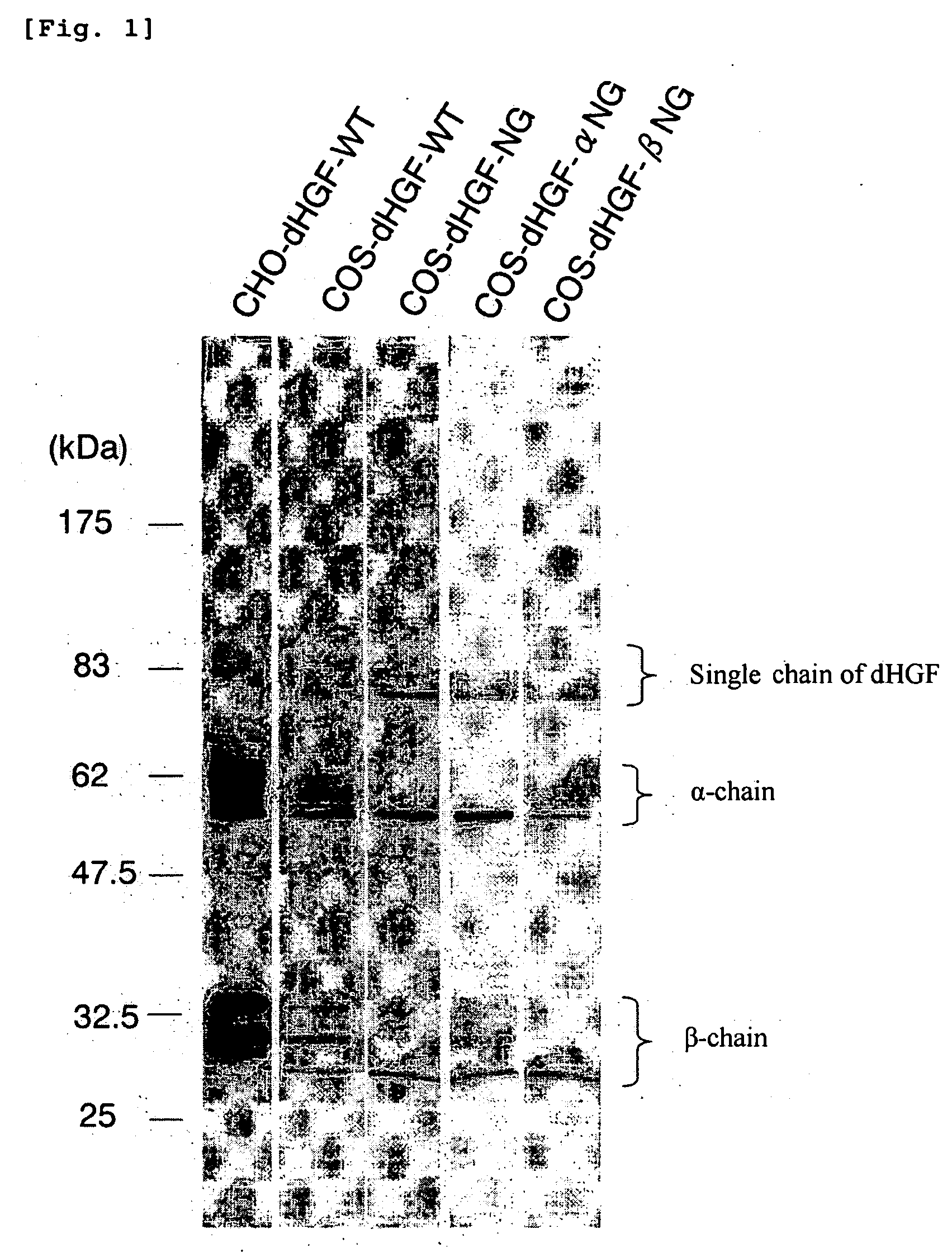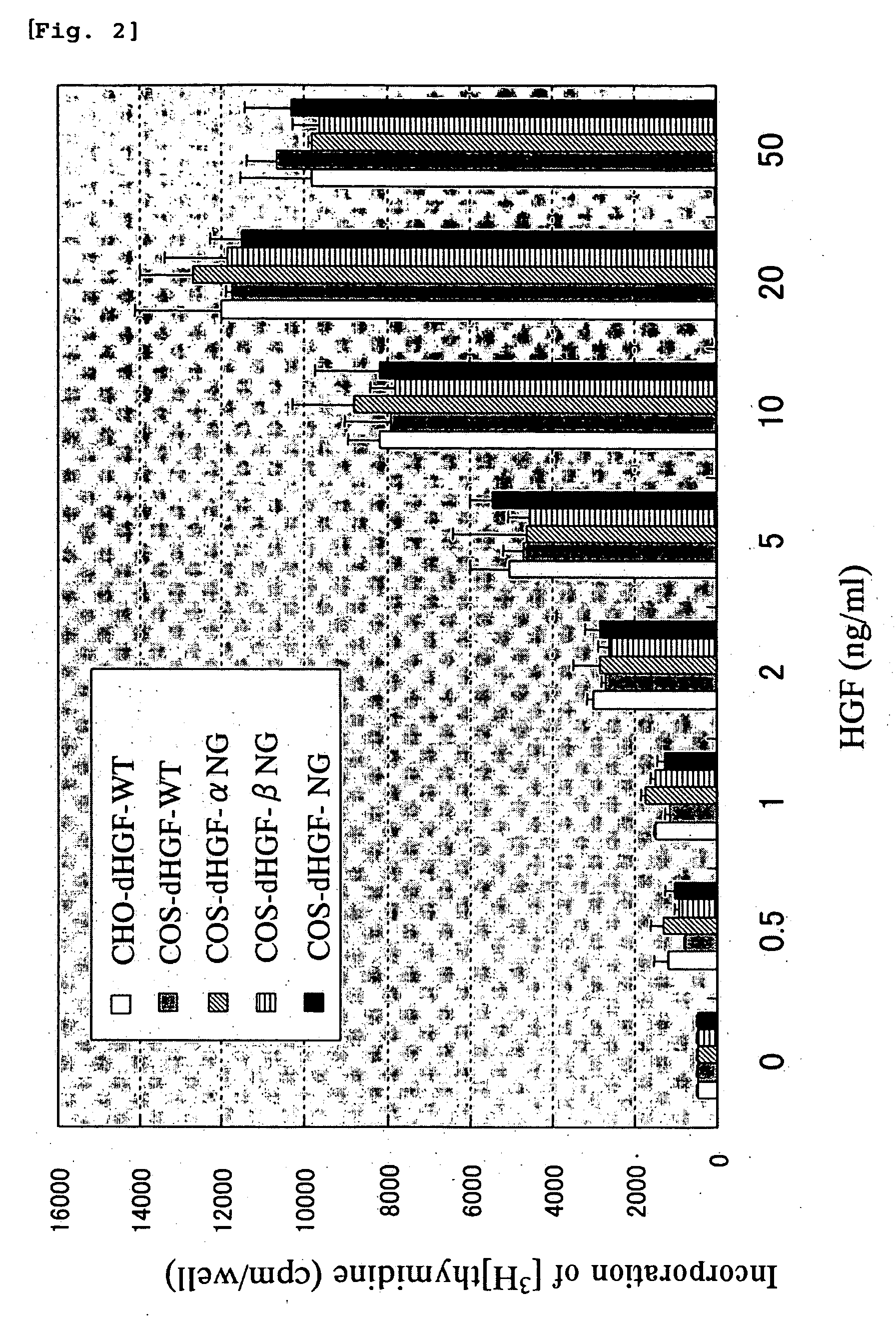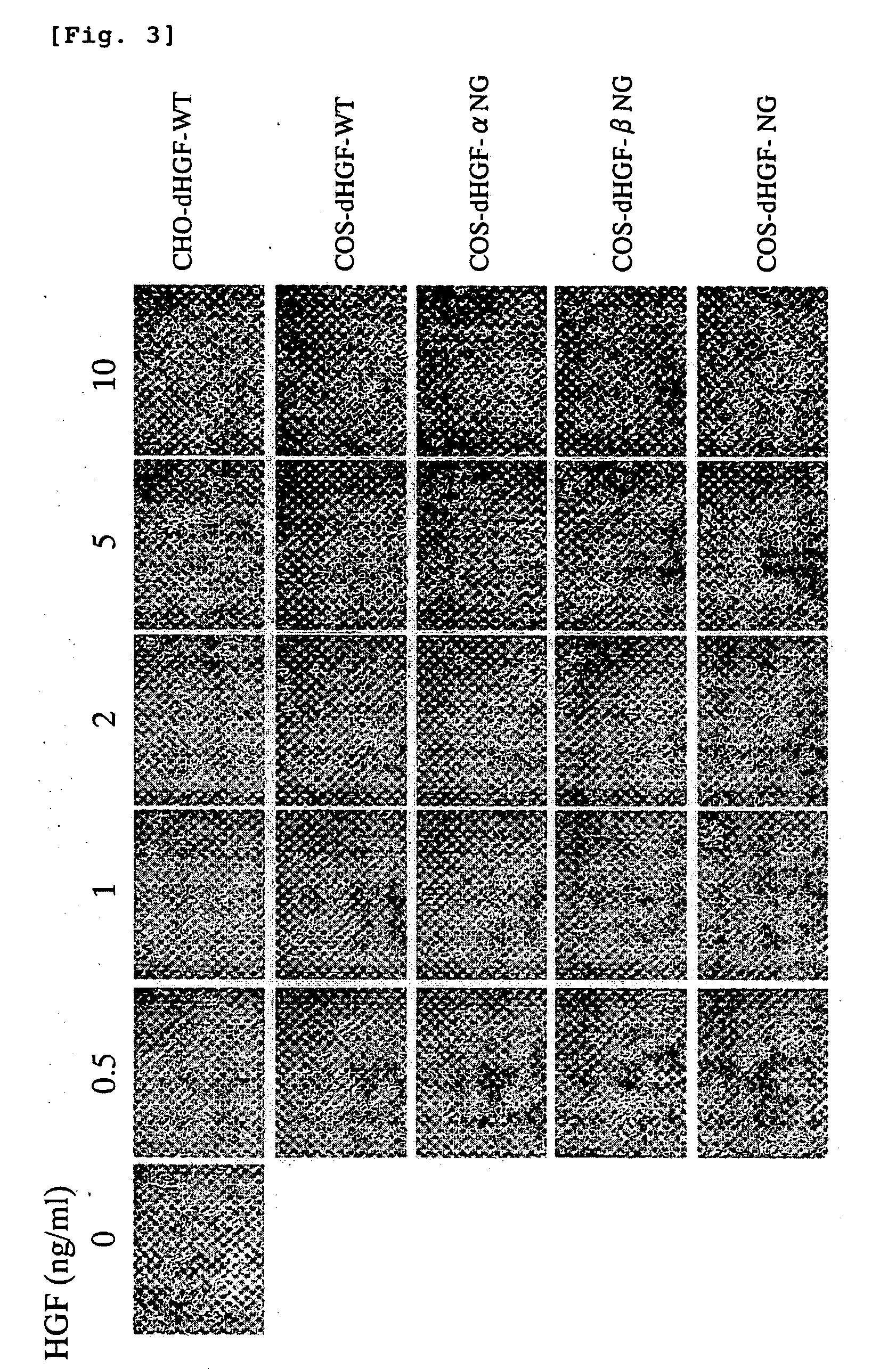Glycosylation-deficient hepatocyte growth factor
a hepatocyte growth factor and hepatocyte technology, applied in the field of glycosylation deficient hepatocyte growth factor, can solve the problems of increased drug price, inability to use recombinant proteins for human medicines, and fear of losing activity
- Summary
- Abstract
- Description
- Claims
- Application Information
AI Technical Summary
Benefits of technology
Problems solved by technology
Method used
Image
Examples
example 1
[0116] A base sequence encoding 5 amino acids-deleted type HGF (dHGF, also named as wild type dHGF) represented by SEQ ID NO: 3 of the sequence listing was integrated into pCAGGS vector. The vector obtained (hereinafter referred to as a wild type vector) is named as pCAGGS-dHGF.
[0117] For the purpose of introducing mutations to 5 glycosylation sites (positions 289, 397, 471, 561 and 648 of SEQ ID NO: 2 in the sequence listing) present in dHGF protein, five mutagenic primers (5′-phosphorylated) shown in Table 1 were synthesized, and site-directed mutagenesis was performed using the pCAGGS-dHGF vector as a template. By this mutagenesis, Asn 289, Asn 397, Asn 561 and Asn 648 are substituted by Gln, and Thr 471 is substituted by Gly, in the amino acid sequence represented by SEQ ID NO: 2.
TABLE 1SequencePrimerlisting5′-tgc gct gac aat act atg caa gac actSEQ ID NO:4gat gtt cct ttg-3′5′-ggc aaa aat tat atg ggc cag tta tccSEQ ID NO:5caa aca aga tct gg-3′5′-tgc aaa cag gtt ctc caa gtt tcc...
example 2
[0124] The mitogenic activities against rat hepatocytes of the wild type dHGF and glycosylation-deficient dHGFs obtained in Example 1 were measured.
[0125] Rat hepatocytes were separated from SD rat (age 8 weeks, male) using a collagenase perfusion method. The obtained hepatocytes were suspended in a William's E(WE) medium containing 5% FCS, and was seeded on a culture plate at a cell density of 30,000 cells / cm2. The culture medium was removed 4 hours later, and was replaced with 480 μL of fresh WE medium (containing 5% FCS) to continue the culturing. After additional 20 hours, 20 μL of a sample solution containing the wild type dHGF or glycosylation-deficient dHGF was added to the medium to further continue the culturing. Twenty hours after the addition of the wild type dHGF or glycosylation-deficient dHGF, [3H]-thymidine (25 Ci / mmol) was added at a concentration of 2.5 μCi / mL, and the culturing was continued for additional 6 hours. Thereafter, the cells were washed with PBS twice,...
example 3
[0127] MDCK-3B cells were suspended in DMEM (containing 10% FCS), and were seeded on a 24-well plate at a cell density of 104 cells / well (480 μL / well). A test sample (20 μL) containing the wild type dHGF or glycosylation-deficient dHGF was added to each well. The plate was incubated at 37° C. for 20 hours, and the extent of scatterring was observed with a microscope (FIG. 3).
[0128] The glycosylation-deficient dHGF (COS-dHGF-NG) showed a motogenic activity equivalent to that of the wild type dHGF (COS-dHGF-WT and CHO-dHGF-WT). The COS-dHGF-αNG that lacks the sugar chain of α-chain and COS-dHGF-βNG that lacks the sugar chain of β-chain also showed similar activities.
PUM
 Login to View More
Login to View More Abstract
Description
Claims
Application Information
 Login to View More
Login to View More - R&D Engineer
- R&D Manager
- IP Professional
- Industry Leading Data Capabilities
- Powerful AI technology
- Patent DNA Extraction
Browse by: Latest US Patents, China's latest patents, Technical Efficacy Thesaurus, Application Domain, Technology Topic, Popular Technical Reports.
© 2024 PatSnap. All rights reserved.Legal|Privacy policy|Modern Slavery Act Transparency Statement|Sitemap|About US| Contact US: help@patsnap.com










